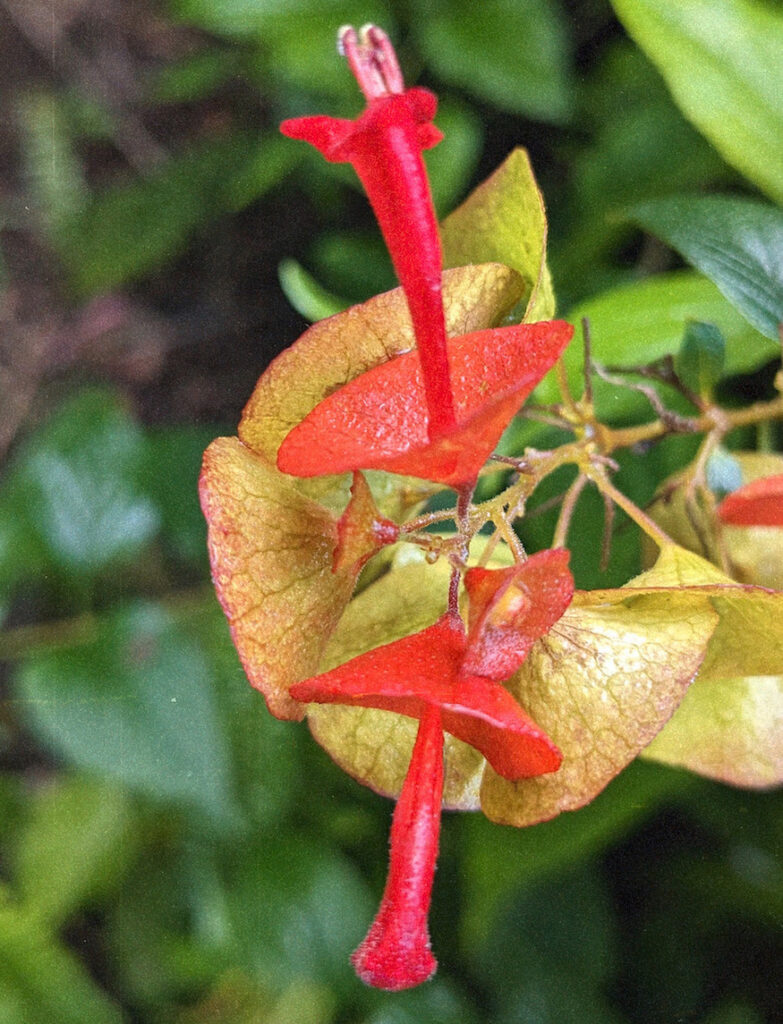The Green Screen Climate Justice and Digital Rights Coalition started in 2020 on a journey to explore how digital rights and climate justice intersect, and how we might most effectively integrate these issues into our work, as funders and practitioners. Here we offer a reflection of the things we, Maya and Fieke, have learned along the way. Seeing as the rest of the magazine dives deep into specific topics at the nexus, we wanted to use this piece to share insights into the process of seeding and supporting the network itself.


The NGO industrial complex has a tendency to claim issue areas like extractive industries claim territories. The desire to stake claims and say ‘we started on this topic first’ ultimately limits the impact of the work as it breeds territoriality and borders rather than interdependence, collectivity, and connections of trust. Slowly exploring how the internet and digital technologies have impacted the planet and the people on it reminds us of just how longstanding these conversations and contestations over land and water are.
As we grow this transnational network, it is important we do not reinforce the narrative that this is a new issue or belongs to a single entity or institution, but rather use the momentum and opportunity to honor and strengthen the ongoing struggle and hard work on the ground.
Doing this has required us, two people based in the global north with knowledge of the digital rights field and the funding ecosystem, to start by listening and learning in order to determine how best to position ourselves in the ecosystem. An initial landscape analysis and issue briefings undertaken by different actors in the network showed the work ahead of us to be intimidating in scope and scale. We had to embrace the uncomfortability of not knowing, and define what we meant by climate justice and digital rights in order to build alliances with others. Through this, we saw a role for ourselves as conveners and bridge builders, between climate justice and digital rights movements, and between grassroots and Indigenous organizers, civil society and funders. The intersection of different positionalities, languages and experiences produces rich complexity, but also (internal) conflict and we’ve found our power as a network lies in our collective ability to embrace these differences, find common grounds, and deal with conflicts as they arise. Our collaborators remind us that the care and commitment with which we navigate these relationships will determine how impactful this coalition can be.
In our capacity as conveners, we hosted two international climate justice and digital rights events, one in Germany in 2022 and one in Costa Rica in 2023. We (re)discovered that building trust and understanding across languages and movements takes time, but is essential when developing strategies against powerful actors and crossborder industries. Building transterritorial solidarity networks requires that we make intentional spaces in international gatherings so people on the frontlines can speak about their resistance and work, in their own language, on their own terms. Only then can we name things for what they are and plot out collective futures.
What struck us in Costa Rica was that we have grown so used to words like ‘extractivism’ and ‘extractive cultures’ to describe the industrial capture of land, resources and personal data, that it requires different perspectives, like those of Indigenous activists protecting the land, to boil it down to its essence: mining other people’s territories is just stealing.
Throughout, we have been refining our collaborative design methodology, inviting community members with complementary perspectives to build the agendas of our events alongside us. Together, we develop shared approaches, challenge assumptions, and bring clarity in mutually beneficial ways. Following feedback from the Berlin event, we added three more thematic areas for discussion: extractivism and mega projects, false and misleading climate solutions, and sustainable and equitable infrastructures. Framing and setting the agenda of our events with the community has allowed for distributed leadership and the creation of actionable shared agendas, as well as keeping us conscious of the need to remain reflexive and acknowledge our own biases. This yields tangible results: thanks to the initiative of the attendees of the Costa Rica meeting, we made space in the schedule for conversation on important topics that we had overlooked, including climate migration, how to stand in solidarity with Indigenous people, and power structures within funding.
There is no easy way out of the multiple crises we are living in today.
Often we fumble, and find that at times our actions contradict our commitments. However, we believe we can only find new pathways out of our concurrent overlapping crises if we actively center and promote different values, Indigenous, feminist, decolonial and community approaches, and commit to working differently. This is where the energy for change is. What we see is a blossoming community that needs support to continue to build together and to bring in the voices of those who haven’t been in the room. We plan to continue into the next year, by sharing the work of the community, surfacing opportunities for collective action, and directly funding projects that seek to intervene and build alternatives.
For too long, the future has been determined by one worldview.
Moving forward we need to celebrate a plurality of approaches and ideas. Over the coming year we hope that the needle will shift from a market-based logic to one that centers people and planet. This means for those based in the global north that we have to start thinking and working towards societies that are based on limits, reduction, and the redistribution of our internet infrastructures and digital technologies. We also hope that we see a shift in the allocation of resources, where more is distributed to those at the frontlines protecting the land, to those whose territories are most impacted by the ecological crisis, and those who are experimenting with new approaches.
Maya Richman, co-lead of the Green Screen Coalition, is a jack-of-all trades who has spent the last ten years listening and learning about the plurality of struggles for technological justice across the world, and supporting activists and organizations to untangle technologies’ hold on our lives and reclaim its power to bring about social and political transformation.
Fieke Jansen is a co-principle investigator of the critical infrastructure lab and a postdoc researcher at the University of Amsterdam. Her research interests are to understand power and conflict around the environmental impact of expanding infrastructures. She is also the co-lead of the Green Screen Climate Justice and Digital Rights coalition. In her PhD at the Data Justice Lab at Cardiff University she looked at the institutional and societal implications of data-driven risk scoring and biometric recognition in Europe. Fieke is a former Mozilla and Green Web Foundation fellow where she explored ways to frame the climate crisis as a core digital rights issue. Prior to starting her PhD Fieke worked for Hivos, where she set up the Digital Defenders Partnership, and at Tactical Tech, where she led the politics of data program.
